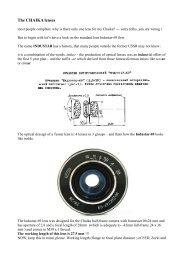
I loved (and still love) to try new cameras, figure out their quirks, and then be either excited or disappointed with the results. I’m happy to report that most of the people I gave them to still use them actively, though. Now they’re typically selling for more than $200. I gave those XAs away to people like they were candy on Halloween, thinking I could always find more at that price. I’ve found multiple Olympus XAs for less than thirty dollars, and in the process, basically ruined myself for almost all other cameras. From Minolta X-700s to Fuji point and shoots with plastic lenses, I was a proud Goodwill scavenger. I would frequent second-hand stores, and buy basically whatever cameras they had. There were plenty of options out there for a clueless amateur like myself. But this was 2016, and the film camera industry was still a bit of a wildcard. I learned to shoot on a quirky Zeiss Ikon SLR that didn’t even have instant mirror return. When I first started shooting in late 2015, I had no idea what I wanted from a camera. It just took me a while to figure out that the camera I was looking for was right under my nose. Or, I should say, I think I found it in 2018 when I first owned (and lost) the Agfa Optima 1035 Sensor. The reason I tell you this is because I think I’ve found it in the Agfa Optima 1035 Sensor.

But ideally, one that also can take great photos when I am trying to take photos. The “the best camera is the one you have with you” camera, as the kids like to say. I’ve been looking for the camera I want to have when I’m not necessarily trying to take photos. I’m not looking for the perfect camera, or one that can do everything, just one that suits my shooting style and isn’t a pain to carry around all the time. I’ve been on a journey for the past five or so years to find my ideal “bring everywhere” camera. It finally fired on the third attempt, much to my fathers surprise 🙂 It was a funny photo, but I will be kind and not post it.How it Took Me Two Years in Four Countries to Realize I Love the Agfa Optima 1035 Sensor For the last few shots I tried to use a flash on the hotshoe. Lots, as in, lots for this area, but not like York or Strafford or anything. It was lovely, lots of unique shops and quaint streets. I have been to the bridge area many times, but not the village center. Close, yet, I don’t remember ever going there before. I cycled to Horbury as it was only 6km away. Aidans of course and then to Horbury, which I was really surprised by. The camera has a filter thread of 49mm and the light meter is on the lens barrel, so perfect for filters. For a few shots I put on a polarising filter for fun. So how did my cheap example work? I loaded it with Agfa APX 400 which seemed appropriate. Or the 1535 with the rangefinder, but they are both out of my price range. I wish I had the 535 version with the slightly larger lower aperture. I love how it looks, how the plastic feels, and the size of the set up. You can either use the regular symbols on the top of the lens or switch it over to see the distance measurements underneath. On my example its movements were as smooth as butter in both directions.įocusing the camera is zoned. There is a button next to the lever that changes the direction of the gears. Here is another quirk, the film advance lever is also the film rewind lever. Other than that, there is no information in the viewfinder to let you know the choices made by the sensor. So, to be clear, the camera still fires when there isn’t enough light.
#Agfa optima sensor flash manual full#
On a half press it means not enough light, on a full press it means shutter fired. What is confusing is that the red light also displays when the shutter is fully activated. There is a low light warning in the viewfinder if you press the shutter part way. The batteries power the camera fully, as in, it is totally automatic. Thanks to Rod in the comment section for the information on the PX625U. The adaptors made the LR44s the perfect shape. Those, along with common LR44 batteries powered up the camera perfectly. Luckily, I had three adapters that I had found inside a various cameras. The main issue for me with using the camera today is that it required three PX625 batteries. You can find lots of technical details here. This camera from around 1978, was really clean inside and out.

That one worked really well, to be fair all the Agfa cameras I have tried have worked well.

It reminded me of the Agfa 110 camera I have previously tried. Plus, it just looks so classically suave to me.


 0 kommentar(er)
0 kommentar(er)
